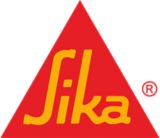Fibre reinforced concrete is designed to improve the durability, toughness and overall performance of concrete and mortar by incorporating fibres directly during the mixing process. By distributing reinforcement evenly throughout the mix, fibres increase ductility, enhance tensile strength and improve the cracking and fracturing behaviour of concrete. A wide variety of fibre types and geometries are available, including steel, plastic and hybrid fibres, each selected to suit specific applications and performance requirements. The addition of fibres helps reduce early age shrinkage cracks, improves the cohesion of fresh concrete, increases flexural and shear strength and enhances resistance to abrasion, freeze thaw exposure and high temperature spalling. This makes fibre reinforced concrete ideal for industrial floors, sprayed concrete, slender precast elements, fire resistant structures and rehabilitation mortars.
Advantages of Fibre Reinforced Concrete
- Homogeneous distribution of fibres throughout the concrete
- Better cohesion and stability in the fresh mix
- Reduced early age shrinkage cracking
- Increased flexural strength and shear strength
- Improved load capacity and overall ductility
- Increased toughness and abrasion resistance
- Enhanced resistance to explosive spalling at high temperatures
- Improved protection against freeze thaw attack
- Ability to replace or partially replace traditional reinforcing steel
- Save time in the construction process and reduce costs
- Increased durability and long-term performance in concrete and mortar applications
Sika Fibre Reinforced Concrete vs Traditional Steel Mesh Reinforced Concrete
Our Range of Fibre Reinforced Concrete Products
Selecting the Right Type of Fibre
Choosing the right fibre mostly depends on the type of application. Different fibre types are used to deliver different performance requirements. Micro-fibres are used to reduce cracking, while macro-fibres increase flexural strength.
Synthetic micro-fibres
Micro-fibres have a diameter less than 0.3 mm and are either monofilament or fibrillated. Micro-fibres should be used for plastic shrinkage control (cracking that can occur in the first 24 hours of concrete curing), impact protection, and reduction of explosive spalling during a fire. The fibrillated micro fibres are often used in replacement of the lightest welded wire fibre for temperature and shrinkage characteristics.
- Reduces plastic shrinkage cracks
- Reduces plastic settlement
- Reduces bleeding
- Alternative to crack control mesh
Synthetic macro-fibres
Structural macro-fibres have a diameter greater than 0.3 mm. Macro-fibres are used as a replacement for temperature and shrinkage reinforcement or as structural reinforcement in concrete or shotcrete. Macro fibres are used where an increase in residual (post-cracking) flexural strength is required (e.g. ASTM C1609 or EN 14845).
- Increases flexural strength
- Increases impact resistance
- Increases durability
- Increases tensile strength
Download Library
FAQ
Fibre reinforced concrete is concrete that contains fibrous materials to increase its structural integrity. Fibres are distributed throughout the mix to control cracking, improve toughness and enhance durability.
Sika offers a range of fibre types including polyolefin macro fibres, polypropylene micro fibres and bio-based fibres.
Fibre reinforcement improves crack control, enhances impact resistance, reduces shrinkage, improves fire protection and increases load-bearing capacity.
It is ideal for industrial floors, slender structures, fire resistant structures, precast concrete, sprayed concrete applications and mortar applications. Fibre reinforced concrete is especially useful where increased durability and crack resistance are critical.
Fibre reinforced concrete can substitute traditional steel reinforcement in some cases, however it is not a complete replacement in all scenarios. Contact a member of our technical team here for guidance on the best concrete reinforcement approach for your project.

